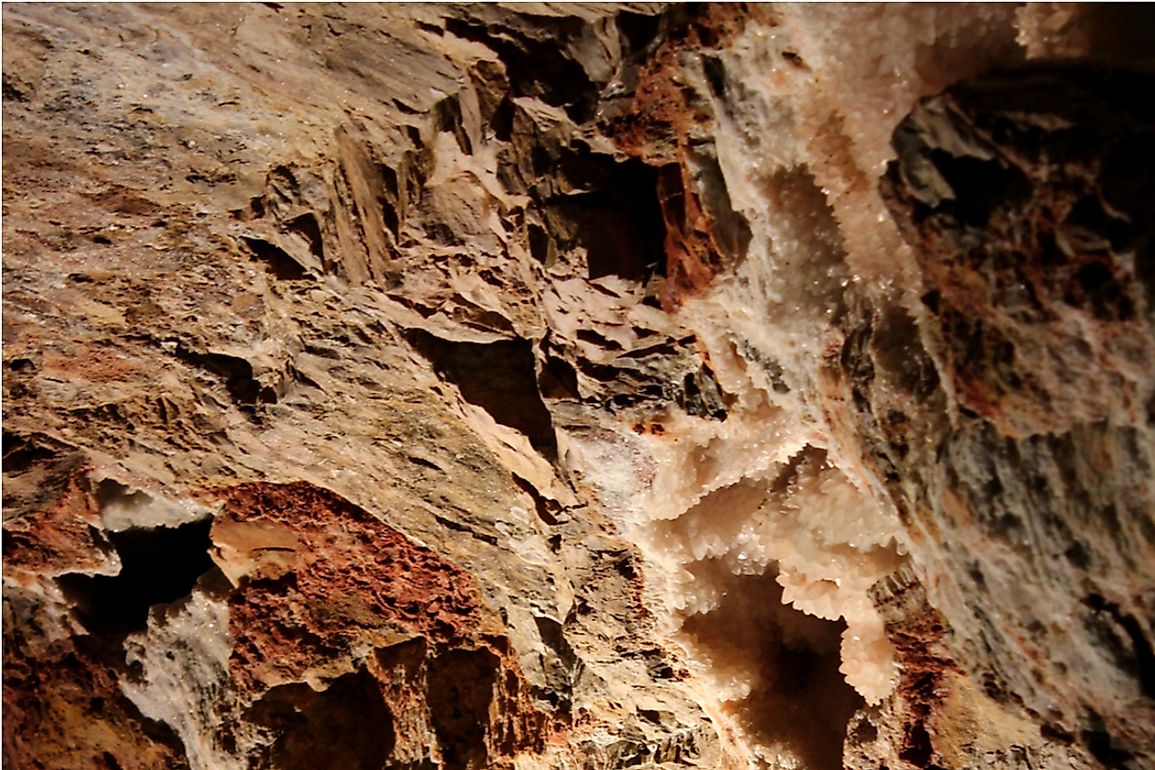Jewel Cave National Monument - Unique Places in North America

Jewel Cave National Monument holds the Jewel cave which is currently the third longest cave in the world. The cave has 181.89 miles of plotted passages. The monument is located in Custer County, South Dakota and is encompassed by the Black Hills national forest. It was designated as a national monument in 1908 by President Theodore Roosevelt.
History of Jewel Cave National Monument
Jewel Cave is lined with calcite crystals, which gave it the name Jewel. The cave was discovered in 1900 by Frank and Albert Michaud. On February 7, 1908, the cave was declared a national monument by President Theodore Roosevelt. Jewel cave has been explored and has had pathways laid since its discovery. Herb and Jan Conn explored and mapped most of the cave, and in 1965 they joined forces with the United States Forest Service and built an elevator and stairs to access previously inaccessible parts of the cave.
Uniqueness of Jewel Cave
Jewel Cave accommodates a rare formation known as a hydromagnesite balloon. The balloon is formed when gas inflates wet magnesium carbonate hydroxide mineral deposits. The cave was not formed by underground rivers like most caves, and it was by slowly circulating groundwater containing acid. The cave was formed by the early carboniferous limestone deposited millions of years ago. The spars or jewels were formed during the cave’s formation.
Habitat of the Monument
The monument is situated in a forest, and the forest is home to several birds and animals. Some animals dwell in the cave. The cave is home to over 1,000 bats during winter. Other animals living in the cave include packrats and springtails. These animals live close to the entrance and can be seen during the tours. Other animals living around the monument include the elk, rabbits, mule deer, and red squirrels.
Tourism to the Monument
The Jewel Cave Monument is open to tourists throughout the year. All tours inside the cave are guided and scheduled with tickets being bought at the entrance. The lantern tour is only offered during the summer. There are different tours offered with different schedules. There is the scenic tour, the discovery tour, historical lantern tour, discovery talks, and wild caving tour. The scenic tour is a walking tour around different parts of the cave. Discovery talk is a tour to one big chamber of the cave with the guide talking about the history of the cave. The historic lantern tour is a tour using lanterns and walking on a rough trail.
Threats to Jewel Cave
There are several threats to the cave resources. One such threat is the facilities like toilets built at the monument to accommodate tourists and the administrators as sewage lines can affect the quality of water in the cave. Oil from vehicles and road salts are a threat too as they can contaminate the water. Water in some of the cave deposits have been found to have increased chloride levels. Wildfire also poses a threat to the monument. For example, the Jasper fire of August 24, 2000, consumed at least 90% of the land area around the monument. Fire at the monument would spread quickly due to its location in a forest and dried up leaves and twigs that act as fire accelerant.











